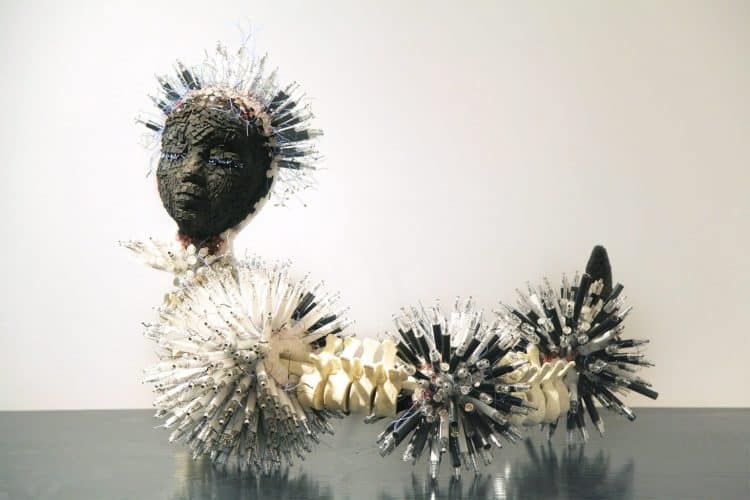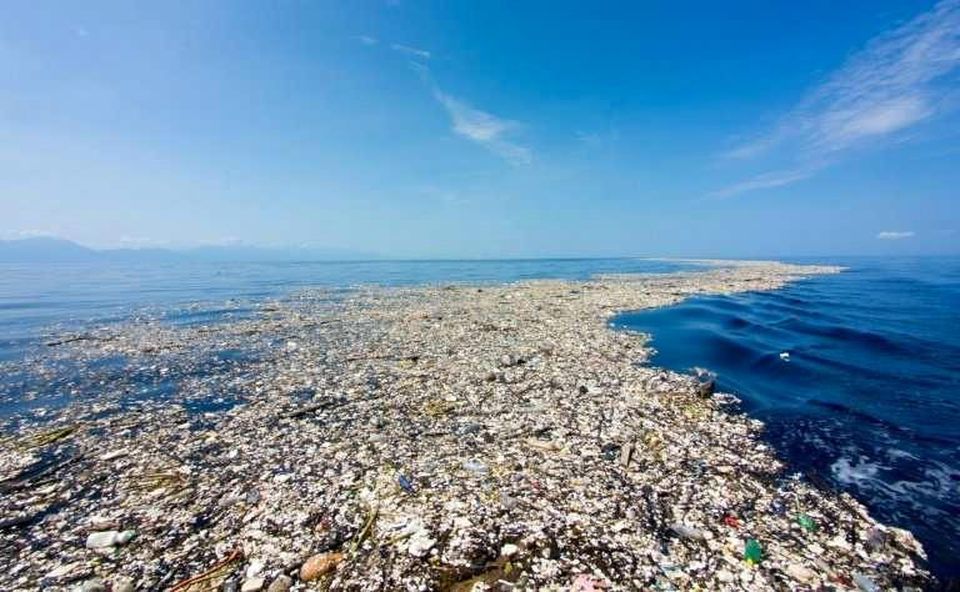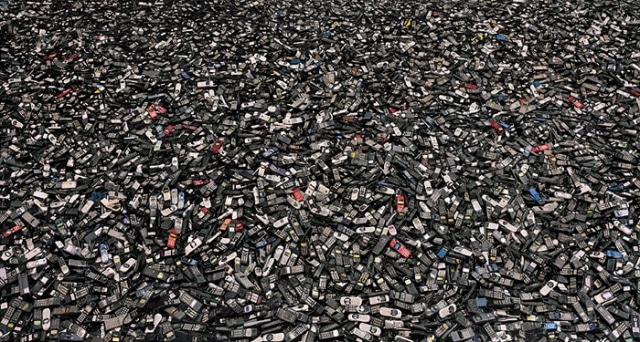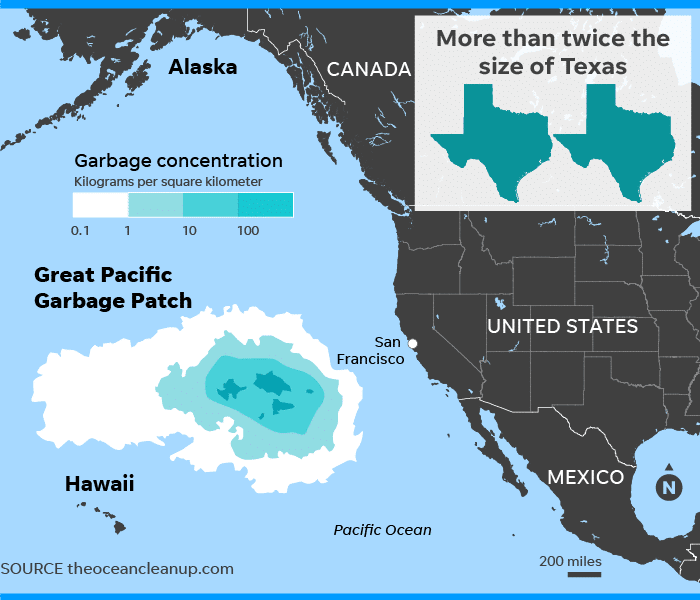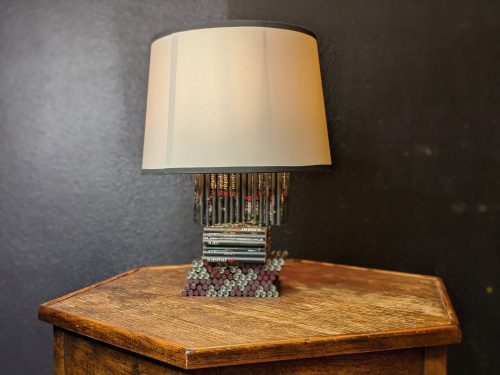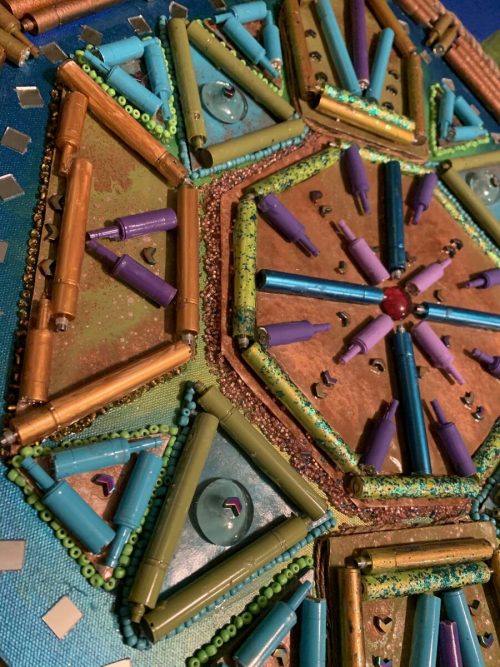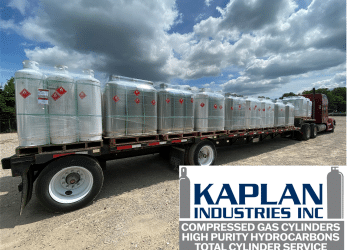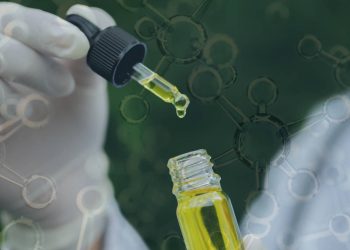Reduce, reuse, recycle. This mantra has been a necessity with increasing relevance and permanence. There’s just a lot of people and a lot of discarded stuff. Watch Karl Pilkington tour the Pyramids of Giza in An Idiot Abroad, and you’ll notice a swirling collection of garbage strewn in disregard of the ancient monoliths. Apparently, garbage is a real problem outside of the Pyramids.
And in the Pacific Ocean, where 80,000 metric tons, or 176,369,600 pounds of debris perpetually floats on, representing 1,800,000,000,000 (1.8 trillion) artifacts of packaging like plastic bags. And of a screen-based society where cell phones are annually discarded as useless despite the technological magnitude that even a year old phone represents.
These are rather unsettling numbers and words. Where can we keep stacking the garbage? On the moon, like some proposed for nuclear waste? (NASA even wrote a paper on it.)
Many people recognize the need to evolve into “greener” routines, that is, if there’s hope for even slightly mitigating the role humanity has played in Earth’s taxation. New, thriving, growing industries like cannabis and hemp can further exacerbate the situation if their ambassadors are not steadfast in sustainable practices. After all, growhouses use electricity and water, incinerating biomass requires fuel, extraction facilities sometimes use organic solvents that need proper disposal, and there’s a lot of packaging required to make products difficult for children to open. This is just a sampling of possibilities.
Jupiter Research recognized the need for sustainable practices too and sought ways to get others talking about environmental stewardship. Jupiter Research manufacturers vaporizer technology, including cartridges, pods, and batteries. I spoke with Kaila Strong, Director of Marketing for Jupiter Research, regarding sustainability within the cannabis/hemp extraction & product manufacturing industries, and the magnitude of the waste being generated from the vaping industry.
“Sustainability opportunities in the cannabis industry are wide and varied,” Kaila explained. “From packaging and manufacturing equipment, to solvents and organics – there are plenty of ways throughout the supply chain to affect sustainable change.”
“There’s an overuse of the term ‘disposable’ in the consumer goods industry,” she continued. “The term is often associated with being able to throw the item away in the normal garbage. This isn’t exactly true, especially in the cannabis industry. Once an item, like a cartridge, has touched cannabis and contains residue, it’s considered hazardous waste. And because it’s considered hazardous waste, it should not be thrown away through normal means.”
Just as archaic aquatic testing methods in California mandate that cannabis waste cannot be sent to landfills since the test shows toxicity to fish (get your heads around that riddle), many waste management companies cannot handle cannabis waste without special licensing. “Transporting plant-touching items, such as cartridges with residual oil, back to their facilities, is illegal,” Kaila added. “Companies like GAIACA in California needed a license under Title 11 to be able to pick up post-consumer used cartridges with any THC residue. Waste management companies that can offer sustainable solutions for the cannabis industry have a large mountain to climb to obtain licensure.”
And thus, the piles of waste enlarge. And how odd that regulators treat things that touch the plant as somehow so very tainted. Madness…
Like all other manufactured goods, resources are used in vaporization technology that could present ideal posterchildren for becoming more cognizant of our natural environment. Kaila says that some components in cartridges and power supplies can be reintroduced into the supply chain and be reused. “From lithium-ion to mixed metals, plastics and glass, the component parts when disassembled, cleaned, ground up, or melted down can be sold back into the industrial goods market and reused.”
So, what should consumers do while regulatory agencies oscillate regarding the generation of guidance for minimizing waste? “Consumers in areas where recycling programs for cartridges don’t exist should hold onto their cartridges until a program is available in their area,” Kaila advised. “If the power supply stops working and isn’t connected to the cartridge, there are lithium-ion recyclers throughout the U.S. and internationally who will accept this e-waste and recycle it.”
Cannabis and art have a symbiotic relationship. Jupiter Research donated 40-50,000 rejected vape cartridges and batteries to Up Kindness, a non-profit organization focused on land resources conservation, to allow artists to create something out of the waste, garbage to glamor. “The exhibit creates awareness through the art and panel discussions on the recycling problem to help the cannabis industry become more sustainable,” Kaila explained. “Our main goal for getting involved with the Carts for the Arts program was to divert things from the waste stream while we continue to work on parallel paths for combatting the wide and diverse cannabis waste issues at hand.”
Beyond artistic repurposing of spent vape technology, how else have Kaila and her colleagues at Jupiter Research driven the sustainability conversation forward? “We have a sustainability committee that looks for ways to be more sustainable throughout our departments including packaging and print, engineering, and operations,” Kaila replied. “We also work in a Leadership in Energy and Environmental Design (LEED) certified building, source paper products from sustainably managed trees at Jupiter HQ, implement education for our staff on what can and can’t be recycled, encourage the use of recycling onsite and continue to expand our positive impact on the environment every week as opportunities are presented.”
Jupiter also works with waste management companies to establish and implement recycling programs for their partners throughout the cannabis waste stream, in addition to alternative use recyclers, like the artists, to divert non-plant touching devices and packaging from the waste stream in upcycled ways.
“Diversion from the waste stream is a large part of the ideal option for becoming more cognizant of our natural environment,” Kaila concluded. “No one wants to see cartridges washing up on shores as we see with straws, coffee pods or other post-consumer items.”
The message has been clear for some time – we need to practice sustainability on a global scale. A continued failure to do so paints a pretty clear portrait of what’s to come. And while we can argue on what those outcomes are and who’s to blame, wouldn’t it be more constructive to drop the debates, take action, educate, make some art, recycle, reuse, repurpose? Like the moon landing, one small step could blossom into something much more beautiful. And these steps could come from something that’s considered practically nothing at all.
Image Credits: USA Today, Forbes, A Better Future is Possible
